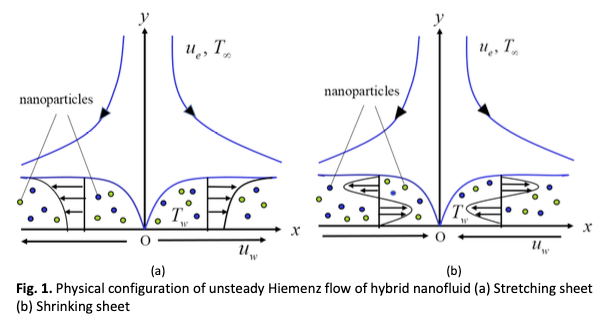Unsteady Hiemenz Flow of Cu-SiO2 Hybrid Nanofluid with Heat Generation/Absorption
DOI:
https://doi.org/10.37934/arfmts.110.2.95107Keywords:
Hybrid nanofluid, unsteady, Hiemenz flow, heat generation/absorptionAbstract
The use of hybrid nanofluid as an alternate heat transfer fluid has shown great potential, and ongoing research to improve its thermal conductivity is important. This study focuses on the impact of heat generation/ absorption on the unsteady Hiemenz flow of aqueous hybrid nanofluid containing copper and silica nanoparticles. Mathematical equations for the hybrid nanofluid model are derived using suitable similarity transformations and solved numerically using bvp4c codes in Matlab software. The results indicate that increased heat generation/absorption leads to an increase in both momentum and thermal boundary layer thickness. The effects of suction and nanoparticle concentration are also analysed and presented graphically. Additionally, a stability analysis is also performed, which discloses that the first solution produced is stable, however, the second solution is not. The findings of this study provide valuable insights into the behaviour of hybrid nanofluid in unsteady flow and can aid in the development of more efficient heat transfer fluids for various engineering applications.
Downloads
































